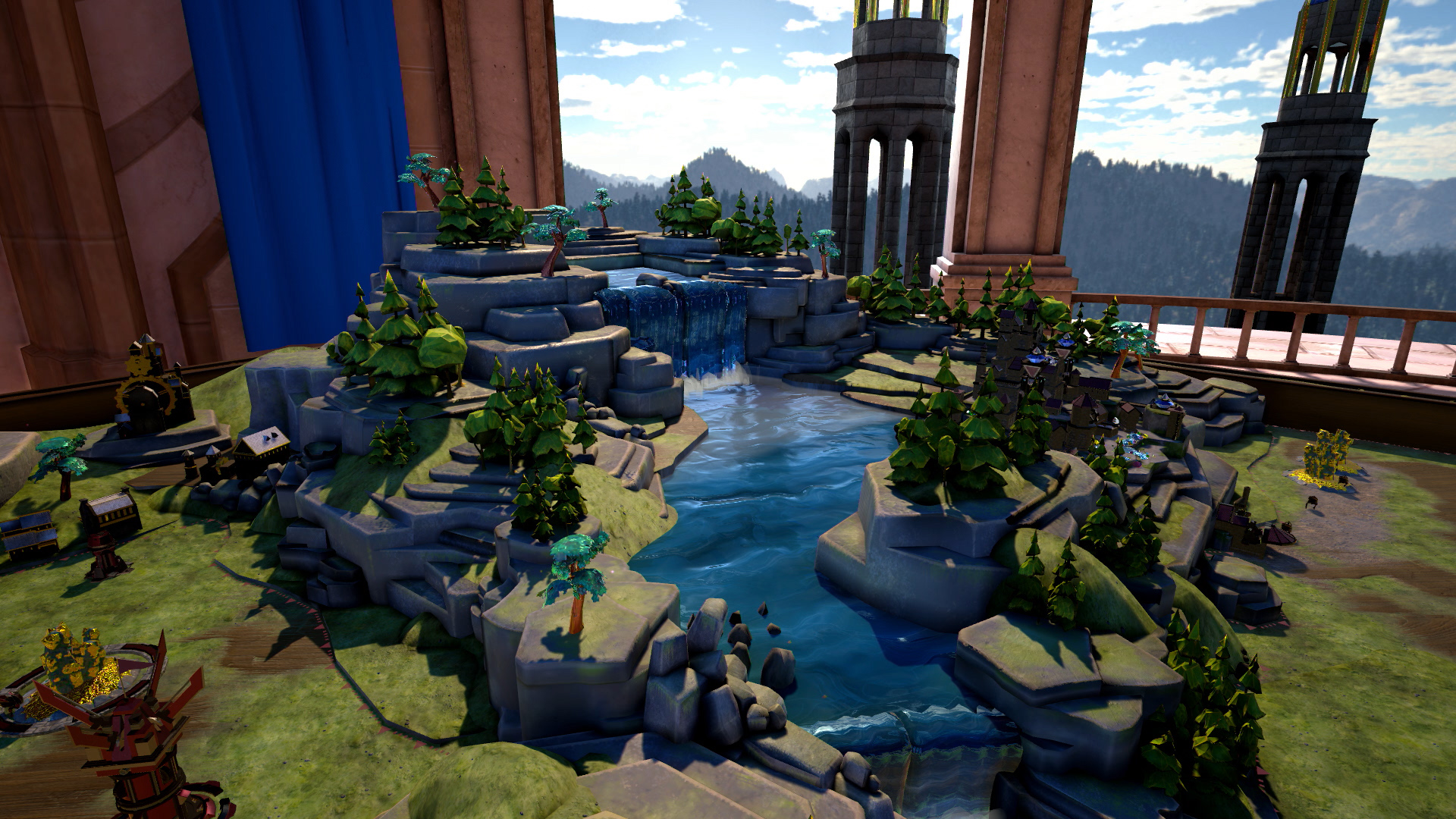Recent Projects
This section contains my more recent professional projects I've been on over the last few years.
Classic RTS experience in VR! I joined Hidden Path Entertainment in 2016 as one of the game and level designers for Brass Tactics. My focus was primarily level design, which meant designing maps, scripting them, creating blueprint actors and classes as needed, and doing the first pass of art on the maps to help establish theme and visual language during or just after whiteboxing.
Overall, we made 21 maps for launch, 19 of which I designed from the ground up. Our efficient process helped us make quality content in a short period of time. Early on, we whiteboxed and playtested many drastically different 1v1 layouts over the course of a few months to see which created desirable (or undesirable) gameplay patterns. Based on what we saw, we took notes to establish the level design standards and best practices. Once we knew the rules and standards, the next step was defining how each map could have its own personality and theme while still adhering to standards.
Campaign and co-op maps break the standards set in 1v1 maps, but to good effect. With an additional layer of scripting and inherent asymmetry in layout and non-human opponents, we could create different gameplay experiences that 1v1, symmetrical gameplay can't offer.
For a detailed look at the level design theory behind Brass Tactics, you can find the blog posts below!
Brass Tactics Level Design Theory, Part 1
Brass Tactics Level Design Theory, Part 2
Brass Tactics Level Design Theory, Part 3
Brass Tactics is available on the Oculus Rift. Brass Tactics was developed by Hidden Path Entertainment and published by Oculus.
Deadly 4v1 multiplayer between Hunters and Monster! I joined Turtle Rock Studios as a level designer and game designer for Evolve mid production when the Hunt game mode was mostly figured out, along with the Goliath monster and Griffin, Markov, Val, and Hank group of hunters.
The other game modes (Rescue, Nest, Defend, and Evacuation) had early prototypes available, so my first role on the team was taking the game modes from their current prototype forms, find their potential, and iterate on them until they met our goals. I worked alongside other designers, gameplay programmers, AI programmers, and UI developers to help determine what features were needed, implement them in the game, guide their iteration, and determine how to best communicate mechanics to the player.
My other role on the team was doing level design work need for the non-Hunt game modes on all the maps, as well as being the primary level designer on the Defend maps after its prototype phase. This included making and iterating on layouts, scripting, trackview sequences, and optimizing.
Evolve is available on PC, XBox One, and PS4. Evolve was developed by Turtle Rock Studios and published by 2K Games.
90s style shooter gameplay in a MMO! Working on Firefall was a unique opportunity. My role at Red 5 Studios included being game designer, level designer, scripter, and producer depending on what the milestone goals were at the time. The two teams I was on for most of my time on Firefall were the Chosen Warfront team, where we focused on creating encounters involving the primary enemies in game, and the Blackwater Anomaly team, where we created and released Firefall’s first 5-man instance.
The Blackwater Anomaly team focused on creating a cooperative, 5-man shooter experience that had deeper narrative aspects and more focused gameplay than what the overland zone experience offered at the time. Firefall didn’t have a focused, more linear missions at that point in time, nor did it have instanced content. The Blackwater team looked at how to best present that to the player utilizing what the player has already learned through playing overland zones. My role on the team was design visionary, level designer, and scripter.
The Chosen Warfront team focused on overland zone encounters involving the main enemies: the Chosen. We looked at what makes a warfront, what kinds of encounters support it, what AI were need, and how to determine where encounters would occur to create an actual front. Varying the experiences was important for pacing and supporting different types of players, and the team required multiple disciplines to accomplish the tasks required. My role on this team was a mix between producer and designer.

























